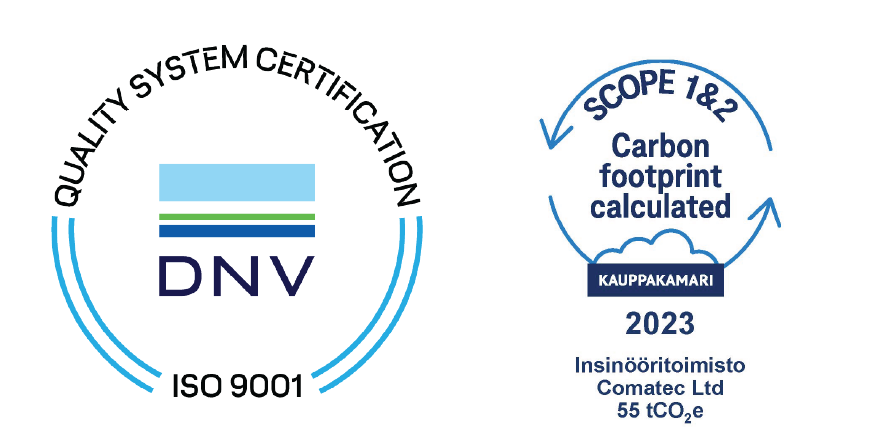
Prevention is the best way to avoid occupational safety offences
This article may contain outdated information.
– Using an expert already when the risks are assessed helps in eventual legal cases
In Finland, around 40 occupational safety offences are handled by the court instances every year. For the part of physical occupational safety, many companies in Finland are already among the best in the world. However, there is still room for development in order for occupational safety matters not to end up in court.
Toni Sortti, LL.M., attorney-at-law, has written two books on occupational safety offences. He is familiar with occupational safety in Finland from the legal praxis point of view. Occupational safety offences are a demanding type of offence, because occupational safety legislation is extensive and the rules for liability distribution are often interpretative. Occupational safety legislation leaves the administrator of law room for various interpretations, even though the situations and events as such are often undisputed. In the industries and branches where physical occupational safety is important, typical cases involve the insufficient safety and protection of a machine or appliance. When a machine or appliance has moving parts, injuries are typically caused by a limb being caught between moving parts, wheels or belts. Because the event as such is often indisputable, the most central part of the investigation is often what happened before the accident.
The three cornerstones of occupational safety: Danger assessment, guidance and supervision
In the legal proceedings concerning occupational safety offences, the most common grounds for prosecution are the insufficient assessment of dangers and risks and insufficient work instructions and supervision. As the events in physical occupational safety cases are often undisputed, the most important dispute concerns whether the accident was unpredictable or exceptional, or such that the employer could not have an effect on it- despite precautions.
“If it can be shown that the dangers and risks were assessed by the best own sources and possibly by an outside expert, this already indicates that there was an effort to identify the risks in the best possible way”, Toni Sortti defines.
”This could also have a meaning, for example, when the court considers whether the risk assessment was done carefully enough.”
”In addition to risk identifying, also things such as clear and understandable work instructions and carefully logged interpretations have an important role. For example, an unclear work instruction could function totally against its purpose, and in a criminal case the prosecutor could even name it as evidence of insufficient or contradictory instructions”, Sortti stresses.
The attitude is also crucial for occupational safety
Just like so many other things, the furthering of occupational safety is also a matter that the management must pay special attention to. Sortti’s opinion is that those companies rank high in the statistics where the message about this subject’s importance comes from the highest level, and where the entire management team is committed to improving occupational safety.
“Of course there can be very good occupational safety work on a local or department level, but it is certainly visible in the organization’s operations if the management finds the matter important and commits the entire organization on all levels to the work”, Sortti says.
Using an expert to assess the risks
The Finnish Occupational Safety and Health Act, section 10, subsection 2 mentions the use of outside experts for assessing risks: If the employer does not have adequate expertise for the action referred to in subsection 1, he or she shall use external experts. ”Despite this, according to Sortti, external experts are surprisingly seldom used to help define risks, even in big companies.
”An expert from outside one’s own enclosure could, during the assessment phase, point out matters that even the best experts in their own organization do not necessarily identify. An expert can also take part in the preparing or reviewing of documents from the point of view of how they would eventually be assessed by the authorities, and how well the findings are recorded.”
”When, for example, a new industrial production line is taken into use, which is always a costly investment, the assessment work of an outside expert is only a small cost, compared to the entirety. Such an investment is more than justified when we are speaking of an important sector like occupational safety work as a whole is”, Sortti says.
“Often people make the somewhat wrong generalisation that the employer would lose these occupational safety cases, but this is not the case when the liabilities are well taken care of, which means that the employer has better chances to win in court”, Sortti adds.
Mental occupational safety
Mental occupational safety has also emerged alongside physical occupational safety in court cases. Toni Sortti has also studied these cases and his new book on mental occupational safety offences will be published by Edita during the autumn of 2018.
“Mental occupational safety is still being defined and I try to define it in this book through court cases. When we are speaking about inappropriate treatment, harassment and overloading, we are often already having a dispute about what is the injury mechanism or what causes the situation. In physical cases, this is usually the clearest thing”, Sortti says.
“Because the experiences are subjective and also one’s personality has an effect on the experience, it is important to find in the estimation the objective threshold, which must be crossed in order to endanger health, and in order to determine when a type of behaviour is constant and repetitive. The rules for mental occupational health will also become clearer when we have more legal praxis and cases”, Sortti believes.
A statistical look at occupational safety offences:
- During 2010-2014 a corporate fine was passed in Finland in 154 occupational safety cases.
- The average corporate fine was €10,700 and the most typical fine passed was €5,000.
- The confiscation to the state of the proceeds of crime was claimed in 10% of the cases.
- The major part (94%) of the convicted corporate bodies were private companies. 6% were made up of other corporate bodies, such as towns, municipal federations or state enterprises.
- The convicted company’s size was over 50 M€ for 27%, while 26.1% were in the size range of 10-50 M€.
- During the analysis period, 25% (28 instances) of the corporate fine cases passed by the District Courts were passed by the Pirkanmaa District Court.
Source: Final report: Yhteisövastuu, turvallisuus ja työturvallisuusrikos muuttuvan työelämän ja lainsäädännön käytännöissä [corporate liability, safety and occupational safety offences in the practices of changing employment and legislature]; Alvesalo-Kuusi Anne, Lähteenmäki Liisa, Janhonen Minna, Tapani Jussi, Räsänen Tuula; Finnish Institute of Occupational Health, 2017.
TEKSTI: MARIA UURTO



